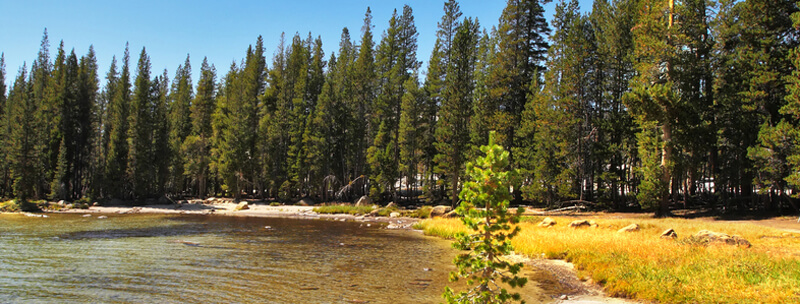In this issue
Governor McGreevey recently enacted two controversial bills that will affect the availability and permitting processes of development opportunities in certain areas of the state: the Highlands Water Protection and Planning Act, S-1 ("Highlands Act") and the Smart Growth Law, P.L. 2004, c. 89 ("Smart Growth Law"). The Highlands Act was signed into law by Governor McGreevey on August 10, 2004. It establishes a comprehensive, long-term approach to the protection and preservation of drinking water and natural resources in the New Jersey Highlands Region, which is the source of drinking water for over half the residents of the State. The Act defines the Highlands Region and establishes a "Highlands preservation area," where development will be strictly regulated by the New Jersey Department of Environmental Protection ("DEP"), and a "Highlands planning area," where development will be monitored and, in some instances, encouraged.
On July 9, 2004, Governor McGreevey enacted the Smart Growth Law. The Smart Growth Law is an outgrowth of the McGreevey Administration's policy to encourage redevelopment in previously developed areas by establishing an expedited permitting process for projects in designated geographic "smart growth areas." The Smart Growth Law generally requires that State agencies take action on a "technically complete" permit application for projects located in Smart Growth Areas within 45 days. The Smart Growth Law also creates the position of Smart Growth Ombudsman, who is appointed by the Governor, and who has the power to review, and effectively veto, new rules proposed by any state agency to the extent that they adversely impact upon development in Smart Growth Areas.
The Highlands Act applies to the New Jersey Highlands region and covers approximately 800,000 acres in portions of the counties of Hunterdon, Somerset, Morris, Warren, Sussex, Passaic and Bergen. The Highlands region is divided into two geographic areas under the Highlands Act: the "preservation area" and the "planning area." The preservation area is approximately 400,000 acres where development will be significantly limited, if not effectively prohibited. The remaining acreage is the planning area, where development will be encouraged in portions that the State Planning Commission delegates as centers. The New Jersey Department of Environmental Protection ("DEP") website at http://www.state.nj.us/dep/highlands/highlands_map.pdf provides a map of the preservation area and planning area.
Highlands Council
The Highlands Act establishes a Highlands Water Protection and Planning Council ("Highlands Council"), which is to be comprised of 15 members. The Highlands Council will include a minimum of eight elected officials, at least five of whom must be municipal officials from the Highlands region. The other seven members, five of whom are appointed by the Governor and two of whom are recommended by the Senate President and Speaker of the Assembly, must have expertise in environmental, land use or economic development matters.
Chief among the Highlands Council's enumerated powers and responsibilities is the responsibility to adopt, after consultation with various State and local agencies and governments, a regional master plan for the Highlands Region ("Highlands Master Plan"). The stated goal of the Highlands Master Plan is "to protect and enhance the significant values of the resources" in the Highlands Region. Within nine to 15 months after adoption of the Highlands Master Plan, counties and municipalities located wholly or partially within a preservation area must revise their development regulations and master plans to be consistent with the Highlands Master Plan. Thereafter, the intent is for local governments to administer the Highlands Act using their revised laws; however, the Highlands Council retains the right to review and, if necessary, to modify any local governmental approval, rejection or approval with conditions.
While a county or municipality located wholly within a planning area need not revise its existing development law, the Highlands Act provides financial incentives to encourage them to do so. In addition, the Act requires the Highlands Council to identify portions of the planning area as "receiving areas" for development under the recently enacted State Transfer of Development Rights Act, N.J.S.A. 40:55D-137 et seq. As a result, municipalities in the planning area are concerned that the net result of the Act will be over-development in the planning area to off-set the harsh restrictions on development in the preservation area.
Statutory Environmental Standards for Major Development in a Preservation Area
The Highlands Act requires that all "major Highlands development" in the preservation area obtain a Highlands Preservation Area approval from the DEP. "Major Highlands development" is (1) any non-residential development in the preservation area, (2) any residential development in the preservation area that requires an environmental land use or water permit or that results in disturbance of one acre or more or a cumulative increase in impervious surface by one-quarter acre or more, (3) any activity in the preservation area that results in the disturbance of one-quarter acre or more of forested area or that results in a cumulative increase in impervious surface by one-quarter acre or more on a lot, or (4) any capital or other project of a State entity or local government unit that requires an environmental land use or water permit or that results in the ultimate disturbance of one acre or more or a cumulative increase in impervious surface by one-quarter acre or more. The term does not include agricultural or horticultural activities.
The prohibitive effect of the Highlands Act on development in preservation areas is demonstrated by the requirements that must be included in a Highlands Preservation Area approval: (1) a 300-foot buffer adjacent to any Highlands open waters, (2) non-degradation of any Highlands open waters, (3) any diversion of more than 50,000 gallons per day requires a permit pursuant to the Water Quality Management Act, N.J.S.A. 58:1A-1 et seq., (4) a zero net fill requirement for flood hazard areas, (5) the antidegradation provisions of the surface water quality standards and the stormwater regulations applicable to category one waters will be applied to all Highlands open waters, (6) a prohibition on impervious surfaces of more than 3% of the lot, (7) a prohibition on development on steep slopes with a grade of 20% or greater, and (8) a prohibition on development that disturbs upland forested areas.
These stringent requirements, which were effective upon enactment, will prohibit most development in the preservation area. Within 270 days of enactment, DEP must promulgate rules and regulations, which are anticipated to be more stringent than the statutory standards. All projects in the preservation area are subject to the statutory and impending regulatory standards unless they fall within one of seventeen exemptions under the Act. Examples of the listed exemptions include the construction of a single family dwelling for one's own use, a major Highlands development that received either a Municipal Land Use Law approval or certain DEP permits prior to March 29, 2004, an improvement to an existing single family home or place of worship, routine maintenance of transportation or infrastructure systems by the State, the routine maintenance of public utility systems, mining activities for facilities existing on June 7, 2004, and site remediation activities.
Dim Prospects of Overturning a Determination by a Local Government and Unconstitutional Takings Claims
Project proponents in the Highlands Region face dim hopes of overturning an adverse determination made by a local government under a revised master plan that was approved by the Highlands Council. Indeed, the Act states that such plans carry "a strong presumption of validity" and a court "shall give extraordinary deference to the local government unit." A project proponent, therefore, has the burden to prove by clear and convincing evidence that the adverse determination by a local government was arbitrary, capricious or unreasonable.
The possibility also exists to challenge the denial of a Highlands Preservation Area approval on the grounds that it constitutes an unconstitutional taking of property without just compensation. The likelihood of a successful challenge, however, is uncertain. Indeed, courts have held that a government entity does not commit an unconstitutional taking if, after a permit denial, the property still maintains some economically viable use; such use need not be the one which will yield the highest economic value to the owner.
Smart Growth Law
The Smart Growth Law was compromise legislation to off-set the harsh effects of development prohibitions in much of the open space remaining in the state under the Highlands Act. Indeed, the legislature adopted the Highlands Act on June 10, 2004; the Smart Growth Law was introduced four days later on June 14, 2004, and adopted in both houses on June 17, 2004.
Expedited Permit Process
The expedited permit process of the Smart Growth Law applies to "permits" for activities to be undertaken in "smart growth areas." Such "permits" include most "permits and approvals" issued by the DEP, except those issued pursuant to the Coastal Area Facilities Review Act, N.J.S.A. 13:19-1 et seq., the Air Pollution Control Act, N.J.S.A. 26:2C-1 et seq., the Solid Waste Management Act, N.J.S.A. 13:1E-1 et seq., and the Radiation Protection Act, N.J.S.A. 26:2D-1 et seq. While the Smart Growth Law provides no additional guidance, "approvals" could be interpreted to include site remediation approvals, such as workplan approvals and No Further Action Letters. Otherwise, to include the term "approvals" arguably would be superfluous to "permits." The Law also applies to any permits and approvals issued by the Department of Transportation ("DOT") and the Department of Community Affairs ("DCA").
The Law defines a "smart growth area" as any of the following areas: Planning Area 1 (Metropolitan) and Planning Area 2 (Suburban) of the State Development and Redevelopment Plan ("State Plan"); a designated center or a designated growth center in a State-endorsed plan; a smart growth area and planning area designated in a master plan adopted by the New Jersey Meadowlands Commission; a growth area designated in the comprehensive management plan adopted by the Pinelands Commission; an urban enterprise zone; an area determined to be in need of redevelopment by the DCA; or similar areas designated by DEP. Accordingly, an applicant for a permit for a project to be undertaken in any of the listed areas has an option to request expedited review of the permit application.
The Law establishes a Division of Smart Growth ("Division") within each of the DEP, DOT and DCA. The director of the respective Divisions is responsible for taking action on permits for which an applicant has requested expedited review. The Smart Growth Law provides an ambitious timeframe of 45 days for expedited review of most technically complete permits. The Division must notify an applicant within 20 days after filing the application if it lacks a submission identified on a checklist. If an application is determined to be administratively complete or if no notice of incompleteness is issued within 20 days, the application is deemed complete for purposes of commencing technical review. If an application is determined to be technically complete, or if no notice of technical deficiency is issued within 45 days of filing the application, the application is deemed technically complete. The Division must take action on a technically complete application within 45 days. This time period may be extended for a 30-day period only upon the mutual consent of the applicant and the agency. Except for a New Jersey Pollutant Discharge Elimination System permit, in the event a Division fails to take action on an application for a permit within 45 days, then the application is deemed to be approved.
Significantly, the Law provides no threshold for project size beyond which an agency's allowable review period would expand. For example, an agency must act on an application for a waterfront development permit for a 20-acre project within the same amount of time as it must act on a two-acre project – i.e. within 45 days.
Expedited Appeal Process
In keeping with the intent of the Smart Growth Law to expedite permits for projects in Smart Growth Areas, the Law also provides an expedited appeal process in the event the applicant seeks to challenge a determination of incomplete application, a denial of a permit application, or the terms or conditions of an approved permit. For this purpose the Law establishes a Smart Growth Unit within the Office of Administrative Law ("OAL"), which will be staffed by administrative law judges ("ALJs") having expertise in matters relating to the appeal.
The timeframes for the expedited appeal process, equally as ambitious as the timeframe for the permitting process, depend upon which issue above forms the basis of the appeal. Within 15 days of the receipt by a Division of the applicant's request for expedited appeal, the Division must transmit the administrative record to the OAL. If the applicant is challenging the Division's determination of incompleteness, the parties must file briefs within 15 days after the case is filed with the OAL, and the ALJ must issue a decision within 30 days after submission of the briefs. If the applicant is challenging the denial of a permit for a project in a Smart Growth Area or any terms or conditions of an approved permit, the ALJ must establish an expedited briefing schedule and any hearings shall be concluded within 45 days after the ALJ receives the case. The ALJ must issue a decision within 45 days after the record is closed.
The decision of an ALJ is binding on the parties and not subject to further appeal. As an alternative, an applicant also retains the right to challenge an administrative action pursuant to the Administrative Procedure Act, N.J.S.A. 52:14B-1 et seq., which provides an initial hearing and opportunity for judicial review. Thus, while the expedited appeal process has obvious advantages, applicants should carefully consider both available appeals processes and not rush to submit under the expedited appeal process; an unfavorable result will leave the applicant with no recourse.
Qualification and Registration of a Certifying Professional
A major element of the expedited permit review process is the requirement that an application include a certification from a "qualified and registered" professional that the application is complete and any statutory and regulatory requirements have been satisfied. Within 120 days of enactment of the Law, i.e. by November 8, 2004, the directors of the respective Divisions are required to develop a program for the qualification and registration of professionals who will provide certifications of completeness.
The qualification and registration provision should be taken seriously by professionals who choose to enter the program. In addition to the possibility of suspension or revocation of qualification and registration to certify applications under the Law, the Law provides more serious and far-reaching penalties for violations of the program requirements. Indeed, a professional who negligently violates any program requirement can lose professional licensure for one year and be barred from qualification and registration for three years; a willful or reckless violation will result in loss of professional licensure for one year and the professional will be barred permanently from qualification and registration. The professional's firm also is subject to be barred as a result of the professional's violation.
Smart Growth Ombudsman
The new Law also establishes a Smart Growth Ombudsman in the DCA. Under the Law, the Ombudsman is appointed by and reports to the Governor, and serves at the Governor's pleasure. On July 16, 2004, Governor McGreevey appointed Susan Bass Levin, Commissioner of DCA, as the Smart Growth Ombudsman.
The enumerated powers of the Ombudsman demonstrate that the Ombudsman is the driving force to facilitate the policies of the new Law. Among the Ombudsman's powers is the authority to review any new rules or regulations of any state agency, as they pertain to Smart Growth Areas, to determine whether they are consistent with the State Plan. In the event the Ombudsman determines that certain rules are inconsistent with the State Plan, the Ombudsman must return the rules to the proposing agency with recommended amendments. The Law makes clear that a State agency shall not publish proposed rules in the New Jersey Register unless and until the Ombudsman determines that they are consistent with the State Plan. The Ombudsman, therefore, effectively is accorded a veto power with respect to any proposed rules that impact upon development in a smart growth area. Significantly, however, the Ombudsman has no authority to review regulations promulgated by the Pinelands Commission, Highlands Council or New Jersey Meadowlands Commission.
Also, at the request of an applicant, the Ombudsman may participate in the permit application and review process to ensure that the Divisions within the relevant agencies are complying with statutory time frames.
Conclusion
The Highlands Act and Smart Growth Law have only recently been enacted and regulations will not be promulgated for many months. Nonetheless, there appears to be consensus that the Highlands Act will significantly curtail development in the Highlands. The Smart Growth Law, however, provides procedural mandates, not substantive standards. It is difficult to predict with certainty whether permit applications will be processed under the expedited time frame and, if not, whether courts will require agencies to issue automatic approvals.
In a decided victory for developers and other members of the regulated community, the New Jersey Supreme Court in IMO Freshwater Wetlands Protection Act Rules (A-91-03) invalidated certain aspects of rules adopted in 2001 by the DEP under the Freshwater Wetlands Protection Act ("Act"), N.J.S.A. 13:9B-1 et seq. The New Jersey Builders Association ("Builders Association") challenged the so-called "residential development project" rules that attempted to restrict construction of new structures for residential use in "transition areas" or buffer zones surrounding freshwater wetlands. Under the Act, maximum transition areas are prescribed for exceptional and intermediate resource value wetlands. The Court determined that DEP acted ultra vires by increasing these transition areas by 20 feet and further by creating buffer zones in ordinary value wetlands when none are required under the Act.
The Builders Association also challenged DEP's rules governing activities near "vernal habitats," which are a small (usually less than an acre), temporarily ponded or otherwise fish-free depression not connected to a flowing stream system. The Court determined that although DEP had a valid concern that "destruction of vernal habitats" could cause "adverse environmental impacts," General Permit 6, which governs activities in vernal habitats, does not mandate an "adverse environmental impact analysis." The requirements for issuing a General Permit 6, as set forth in the Act, serve as a substitute for impact analysis. Thus, DEP's attempt to create additional requirements was contrary to its statutory authority under the Act.
The Supreme Court of New Jersey in Island Venture Associates. v. New Jersey Department of Environmental Protection, 846 A.2d 1228 (2004), upheld the ruling of Appellate Division, as reported in the May 2003 issue of UPDATE, that a bona fide purchaser of real estate could not be subject to a land use restriction that was imposed on a predecessor-in-title by the DEP.
Plaintiff Island Venture Associates ("Island Venture") acquired the unimproved lots in the Township of Long Beach, intending to build residential dwellings. While a "diligent title search" revealed no restrictions as to residential development, the lots, in fact, contained a restriction to "water-dependent" uses imposed under the Coastal Area Facilities Review Act ("CAFRA"). The restriction did not turn up in the title search, however, because the prior owner's recorded master deed contained an incorrect metes and bounds description.
DEP argued that residential dwellings are not "water-dependent" uses and, therefore, sought to impose the CAFRA restriction upon Island Venture. The Supreme Court declined to do so, holding that the balance of equities under the circumstances clearly favored Island Venture, which performed an appropriate inquiry pursuant to the State's recording act prior to its purchase of the property. In support of its holding, the Court also noted that DEP's regulations now require deed restrictions to be recorded properly and that such recordation will enhance, not encumber, CAFRA's salutary goals. The Court quelled any fears that its holding might undo transactions in which permit challenges were settled many years ago, stating expressly that its holding applies only to actions commenced on the date of the Appellate Division's decision, April 11, 2003.
DEP recently announced that it will no longer process certain applications for Letters of Non-Applicability ("LNA") with respect to compliance with the Industrial Site Recovery Act ("ISRA"), N.J.S.A. 13:1k-6 et seq., for transactions or properties that are "unmistakably exempt" from ISRA. Obtaining an LNA has become a common requirement of lenders and other commercial entities in New Jersey, often without regard to actual use of the subject property. DEP receives over 5,000 applications for ISRA LNAs each year, the majority of which, according to the agency, address properties or transactions that clearly are exempt from ISRA. Examples of transactions for businesses "unmistakably exempt" from ISRA include refinancing of a mortgage or loan, obtaining a construction loan, and transactions involving residential properties, undeveloped land, retail gasoline stations, automobile repair shops, and dry cleaners. Applications for an LNA submitted contrary to this policy will be returned to the applicant unprocessed.
In May 2004, the DEP released its latest environmental mapping tool, i-MapNJ DEP. Like its older sibling, i-MapNJ NJEMS, which still is available, i-MapNJ DEP can be searched to find out information concerning known contaminated sites by entering a reference address and appropriate data layers. The same data layers that were available in i-MapNJ NJEMS are available in this new application and some have been updated. The updated GIS data layers include the Landscape Project data, Legislative & Congressional Districts, Groundwater Contamination Areas (CEA and CKE) and Soils (SSURGO). In addition, there are several new data layers including Surface Water Quality Standards, Category One Waters, Deed Notices, and 2002 digital imagery.
Also, in July 2004, DEP launched another GIS mapping application: i-MapNJ Geology. This new application provides information about the State's geology, aquifers, wellhead protection areas, abandoned mines, earthquake epicenters and more. Both mapping applications can be accessed by visiting: www.state.nj.us/dep/gis/newmapping.htm
DEP Data Miner
In late spring, the DEP launched a new format for its Data Miner website. The Data Miner can be used to obtain information such as air quality permitting and reporting, a list of certified laboratories, information on a particular site or information on compliance and enforcement, and the like. Thus, the Data Miner, which is used to obtain charts and reports, can be used in conjunction with i-MapNJ DEP, which provides an interactive mapping program. As part of the DEP's Open Public Records website, the Data Miner provides a variety of reports and searching options with up to the minute results. According to DEP, "the information contained in this site is the best available according to the procedures and standards of each of the contributing programs." The Data Miner website can be accessed at: http://www.state.nj.us/dep/opra/online.html
DEP Announces Draft Soil Remediation Standards
The DEP announced in July 2004 the availability of draft Soil Remediation Standards for interested party review. Adoption of the new standards, which formally will be proposed in calendar year 2005, will fulfill long-standing mandates of the Environmental Cleanup Response Act ("ECRA"), now ISRA, N.J.S.A. 13:1K-6 et seq., the Hazardous Site Discharge Remediation Act, P.L. 1993 c. 139 (S-1070), and the Brownfield and Contamination Site Remediation Act, P.L. 1997 c. 278 (S-39), that the agency adopt soil cleanup standards.
Many aspects of the draft Soil Remediation Standards deviate substantially from the agency's current practice and use of the residential and non-residential "Soil Cleanup Criteria." For example, new standards have been proposed for a number of contaminants for which Soil Cleanup Criteria currently do not exist. Many of the existing criteria are decreased by an order of magnitude or more in the new standards, potentially giving rise to new remedial obligations with respect to both open and closed site remediation cases. With respect to many contaminants, the impact-to-groundwater standards are significantly more stringent. In a new approach for DEP, the agency has created distinct standards for contaminants for different exposure pathways, i.e., ingestion-dermal and inhalation. DEP also has created one state-wide natural background Soil Remediation Standard, i.e., for arsenic at 8 parts per million. The proposal is likely to provide significant new guidance and procedures on the development and use of site-specific Soil Remediation Standards.
"Basis and Background" documents for the draft Soil Remediation Standards are available on DEP's website at: http://www.nj.gov/dep/srp/regs/srs/proposed/ DEP anticipates formally proposing Soil Remediation Standards and regulations during calendar year 2005.
On June 29, 2004, Governor McGreevey signed into law Assembly bill A-3118, imposing an annual air toxics surcharge upon the owner or operator of each facility that is required to submit a release and pollution prevention report. The surcharge is to be based on certain air emissions as defined in the legislation. The bill was introduced on June 21st, passed by the Assembly and Senate, and enacted all within one week.
Three bills sponsored by Senator Joseph Doria, designed to protect New Jersey's drinking water supply, were signed by Governor McGreevey on July 25, 2004.
The first bill, S-1644, increases the statutory debt ceiling of the New Jersey Environmental Infrastructure Trust (the "Trust") from $1.6 billion to $2 billion and expands the list of allowable projects to include water resource projects related to transfers of water between public water systems during states of emergency, to avert a drought, or to provide relief to areas of contaminated ground water.
S-1646 appropriates funds to DEP to finance low cost loans to municipalities and local water authorities to implement projects intended to protect the water supply and to upgrade sewer and wastewater treatment facilities.
Finally, S-1647 authorizes the Trust to expend up to $350 million for loans to localities, public authorities, private water companies and other private entities for eligible clean water and drinking water projects.
New Jersey's Spill Compensation Fund, N.J.S.A. 58:10-23.11h, is serviced by a tax levied on the petroleum and chemical industries of the State. A recent legislative amendment increases the tax imposed on transfers of hazardous substances from $.0150 to $.0230 per barrel for petroleum or petroleum products, precious metals, elemental phosphorous, or in certain circumstances, antimony or antimony trioxide sold for use in the manufacture or for the purpose of fire retardants. For other hazardous substances, the tax is 1.53% of the fair market value of the product. The amendment became effective on June 30, 2004 and makes the tax changes retroactive to January 1, 2004. Affected taxpayers are required to file an amended tax return on or before the third month following the date of enactment and to pay the additional taxes owed on transfers occurring between January 1, 2004 and June 30, 2004.
In response to growing concern over the supply of safe drinking water in the wake of recent droughts and the September 11, 2001 terrorist attack, on February 24, 2004, the Senate Environment Committee approved S-192, referred to as the New Jersey Clean Water, Drought Mitigation and Water Resource Security Trust Fund Act. The purpose of S-192 is to establish a mechanism, supported by a stable revenue source, to transfer water between public water systems during a state of water emergency to avert a drought, as well as to protect New Jersey's water supply from attacks by terrorists or from other deliberate or intentional acts of degradation or destruction. The funds would come from two sources:
The universe of industries that are required to obtain water diversion permits (referred to as "Water Supply Allocation Permits" under N.J.A.C. 7:19-1.1 et seq.), and thus subject to the proposed tax, is surprisingly diverse, including everything from chemical companies to golf courses. There are exemptions from the Act. As well, anyone subject to the water diversion user fee may be eligible for "water conservation credits" for net reductions in annual water use, as long as the reductions are attributable to water conservation.
Critics of S-192 characterize the measure as yet another onerous tax on New Jersey's already overburdened industry, the negative effect of which will be magnified by the sluggish economy. The bill awaits further action in the Senate Budget and Appropriations Committee.
On June 24, 2004, the Assembly passed A-2478, which impacts the method that sewerage authorities may use to assess Industrial Pretreatment Program ("IPP") charges. If enacted, industries that are indirect dischargers to sewerage authorities may see significant changes in their yearly IPP charges.
Currently, a sewerage authority may assess IPP fees under its general authority to "charge and collect rents, rates, fees or other charges . . . for direct or indirect connection with, or the use or services of, the sewerage system." N.J.S.A. 40:14A-8. These charges may be based on a variety of factors, including the consumption of water by the user, the number and kind of water outlets at the user's facility, the type of plumbing or sewerage fixtures utilized by a user or the number of persons working at the user's facility, or specific characteristics of the user's discharge.
The impact of A-2478 on industry could be significant, though whether that impact is positive or negative may depend on the current IPP fee system applied by the particular sewerage authority. Where sewerage authorities do not already base their IPP charges solely on discharge flow, it is likely that the bill will result in a shifting of fees among the population of industrial and commercial users. For instance, an industry with a high BOD content in its wastewater, such as a dairy or food processing manufacturer, could see a significant reduction in its annual IPP fee. On the other hand, an industry that discharges a significant volume of a dilute waste stream could see a significant increase in its IPP fee. The bill has been referred to the Senate Budget and Appropriations Committee, where it is likely to undergo additional amendment before any action is taken.









